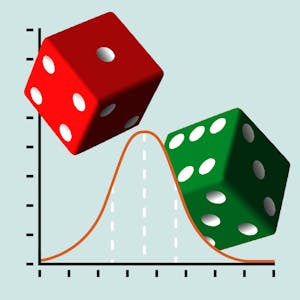An Intuitive Introduction to Probability
About this Course
This course will provide you with a basic, intuitive and practical introduction into Probability Theory. You will be able to learn how to apply Probability Theory in different scenarios and you will earn a \"toolbox\" of methods to deal with uncertainty in your daily life. The course is split in 5 modules. In each module you will first have an easy introduction into the topic, which will serve as a basis to further develop your knowledge about the topic and acquire the \"tools\" to deal with uncertainty. Additionally, you will have the opportunity to complete 5 exercise sessions to reflect about the content learned in each module and start applying your earned knowledge right away. The topics covered are: \"Probability\", \"Conditional Probability\", \"Applications\", \"Random Variables\", and \"Normal Distribution\". You will see how the modules are taught in a lively way, focusing on having an entertaining and useful learning experience! We are looking forward to see you online!Created by: University of Zurich

Related Online Courses
In this course, you will develop your English conversational skills that you can use to build your personal and professional relationships. Learning activities in this course will take place on... more
Interpersonal communication is one of the most important management skills: everyday we relate with our bosses, collaborators, customers and colleagues. Being a good communicator is synonym to... more
Airtable is a cloud collaboration service that combines the features of databases and spreadsheets. In this 1.5 hour guided project, you will learn the basics of relational database and get up to... more
Data engineering is one of the fastest-growing tech occupations, where the demand for skilled data engineers far outweighs the supply. The goal of data engineering is to make quality data available... more
This course provides a comprehensive understanding of central tendency measures, equipping students with the skills to compute, interpret, and distinguish these measures in frequency distributions.... more








